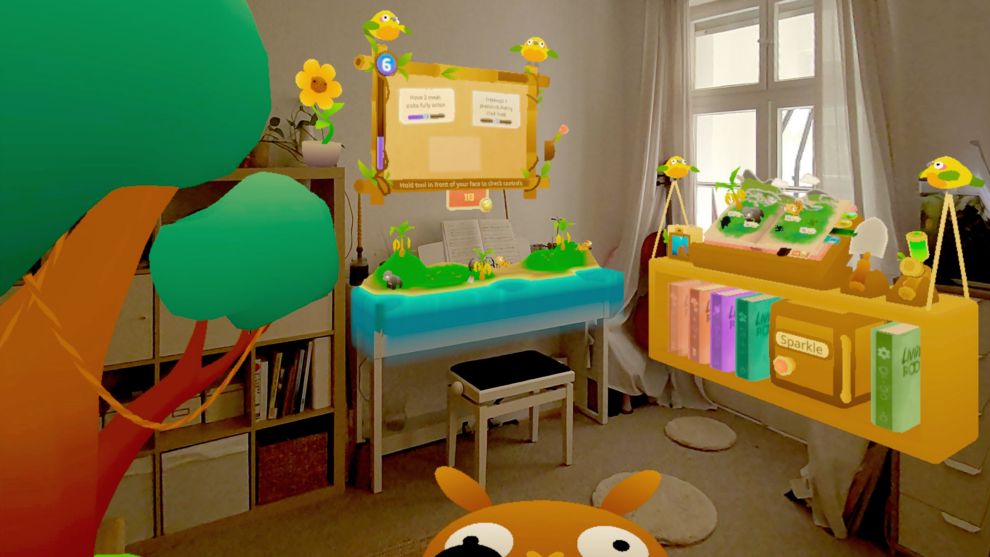A groundbreaking mixed reality application is offering an innovative solution. Living Room, the latest creation from developer Thoughtfish, transforms ordinary home spaces into vibrant wildlife sanctuaries, merging the appeal of virtual pets with ecosystem management.
The experience begins with a simple room scan, after which users become custodians of their own digital nature reserve. Armed with intuitive tools like a terrain-painting gun and a landscaping trowel, aspiring zookeepers can shape their personal wilderness. The application’s picture-book style interface makes the process of populating your space with diverse flora and fauna remarkably straightforward.
What sets Living Room apart is its delicate balance of accessibility and ecological complexity. While the interface remains user-friendly, players must carefully manage the intricate relationships between carnivores and omnivores to maintain a thriving ecosystem. A comprehensive tutorial system gradually introduces new species and features, ensuring users aren’t overwhelmed by the responsibility of maintaining their digital menagerie.
The game’s progression system revolves around “Happy Points,” a currency earned by maintaining a healthy and harmonious environment. These points unlock access to new creatures and decorative elements, encouraging players to expand and diversify their sanctuaries. Regular micro-challenges, such as protecting vulnerable species from predators or establishing specific plant populations, provide structure to the otherwise free-form experience.
However, the hands-off nature of Living Room might leave some users wanting more. Once the basic mechanics are mastered, the experience settles into a relatively passive rhythm, more akin to watching a stylized nature documentary than actively managing a dynamic ecosystem. The lack of unexpected events or deeper gameplay mechanics becomes apparent as users reach the limits of the system’s complexity.
Yet, it’s within these limitations that some of Living Room’s most charming moments emerge. One particularly memorable instance occurred during testing when a momentary distraction led to an unexpected population shift – a group of introduced jaguars dramatically reduced the gorilla population, creating an unintended but darkly humorous illustration of nature’s brutal efficiency. The game’s forgiving design allows for quick recovery from such setbacks, maintaining its accessible, family-friendly atmosphere.
Perhaps the most endearing feature is the ability to select a favorite creature and transform it into a room-sized companion. These supersized pets interact with the real environment in delightful ways, from furniture-hopping to treasure hunting. The addition of interactive elements, such as petting mechanics that prompt adorable heart animations, creates a surprisingly emotional connection with these digital creatures.
For individuals prevented from keeping real pets due to allergies, living situations, or other restrictions, Living Room offers a compelling alternative. The application successfully bridges the gap between virtual pet ownership and ecosystem simulation, creating an experience that’s both educational and emotionally satisfying.
While the core gameplay loop may eventually become repetitive for some users, the charm of watching your personal ecosystem evolve and interact with your real living space maintains its appeal. The ability to customize your environment and form bonds with individual creatures adds a personal touch that elevates the experience beyond mere simulation.
Living Room represents an innovative step forward in mixed reality applications, demonstrating how technology can provide novel solutions to real-world limitations. While it may not fully replicate the experience of actual pet ownership, it offers a unique and engaging alternative that brings the wonders of wildlife into domestic spaces.
The application is currently available for the Meta Quest 3 family of devices, offering users a chance to transform their living spaces into personal wildlife sanctuaries, one digital creature at a time.
















Add Comment